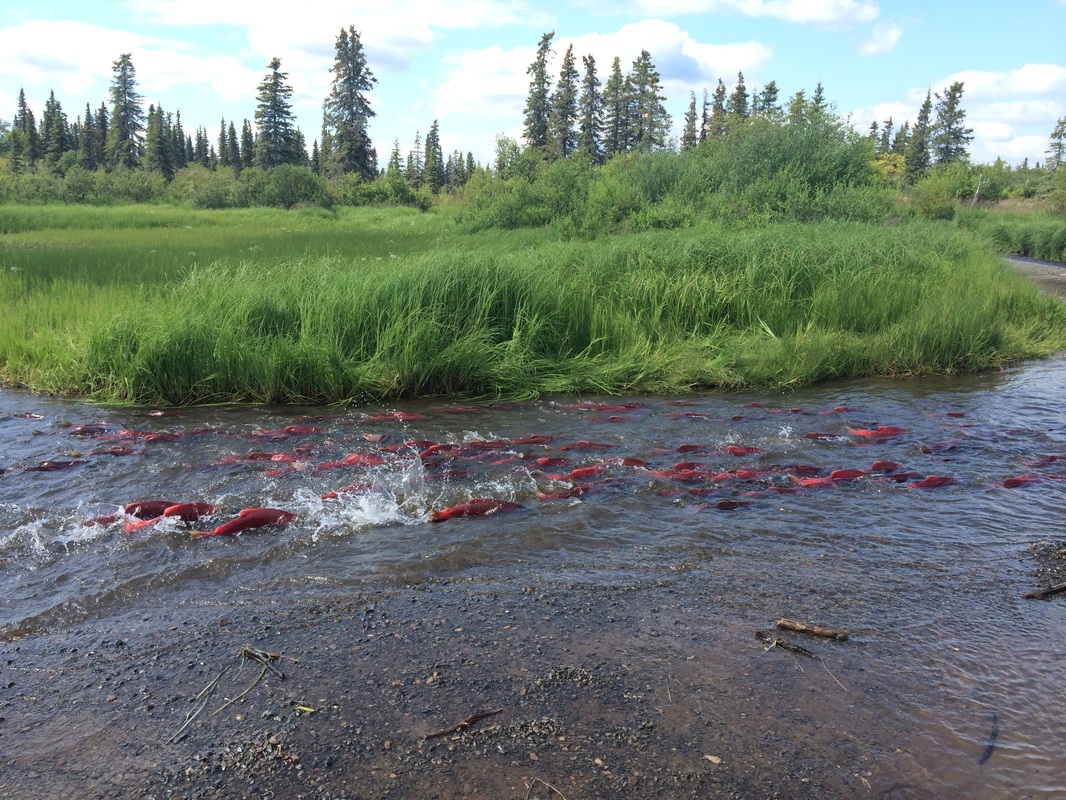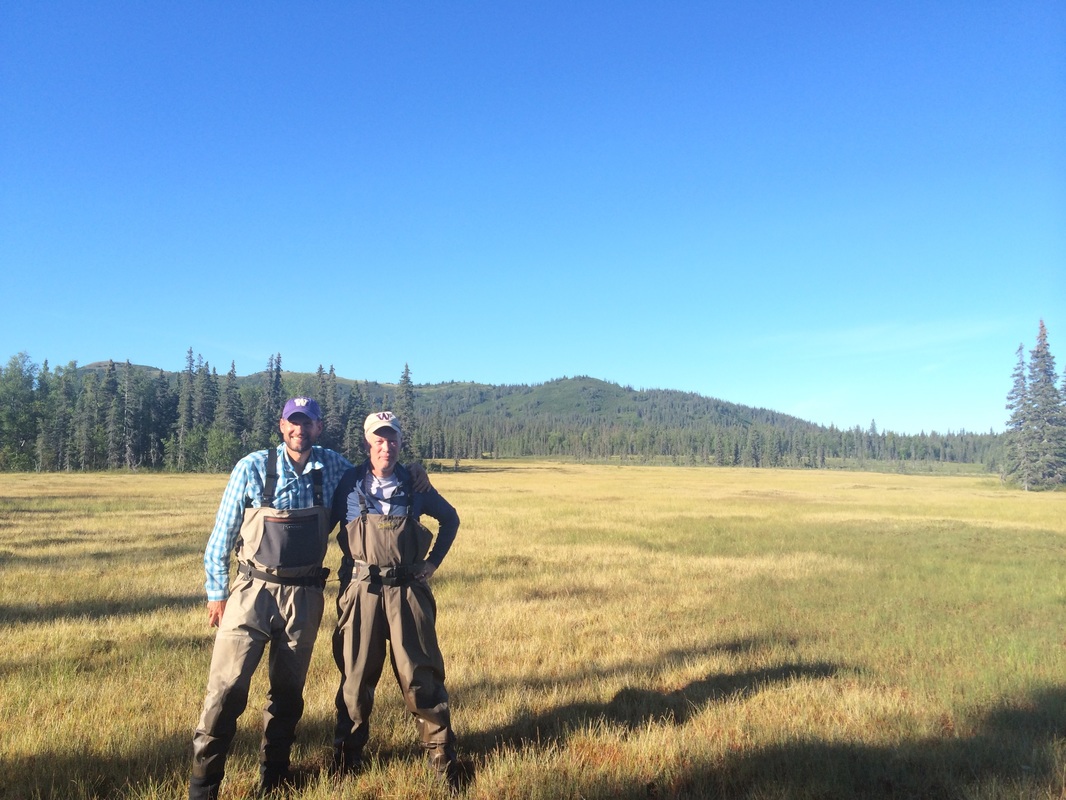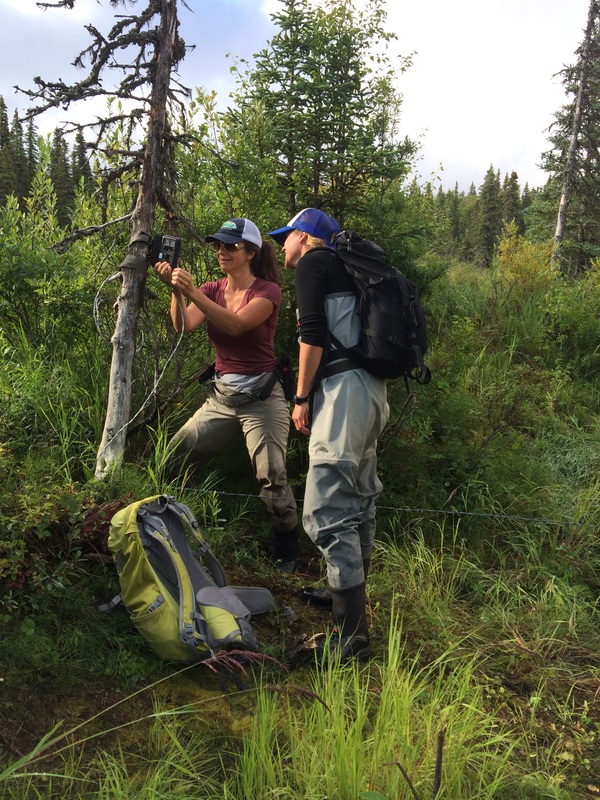By Aaron Wirsing
Now in its 5th year, and counting, our Alaska Bear Project continues to build momentum. Working in collaboration with Professor Tom Quinn (SAFS), I've just returned from Bristol Bay, where we've been non-invasively studying bears hunting along six sockeye salmon spawning streams (alliteration!) since 2012. Thus far, we've collected over 2000 hair samples for genetic analysis using barbed wires strung across the streams and detected 121 bears.
| Sockeye salmon make the push into Happy Creek. Tom and I on the tundra near one of our bear wires on Whitefish Creek (Photo by Blakeley Adkins). Yep, Bristol Bay is a tough place to work. | Anne Hilborn (PhD student, Virginia Tech) and Blakeley Adkins (our bear research technician for the 2016 season) check one of the motion-activated video cameras for new bear footage. Here, on Eagle Creek, the camera is paired with a hair snagging wire, letting us match footage with deposited hairs to determine, for example, if the sample was left by a lone individual or a mother with cubs. |
This year, for the first time, we've been collecting video using motion-activated trail cameras deployed in conjunction with the wires, and elsewhere, on each stream. We'll be analyzing the videos to explore bear behavioral responses to the wires (e.g., do they learn to avoid them?), and to track the timing and location of different bear behaviors including foraging and traveling. Working with Anne Hilborn, a PhD student in Marcella Kelly's lab at Virginia Tech, we're also using the videos as a means to better communicate our work and findings to the public. Below, two videos provide good examples of the kinds of footage we collect: a mother passing by with two cubs, and one of the many curious bears attracted (presumably) to the sound of the cameras.




 RSS Feed
RSS Feed